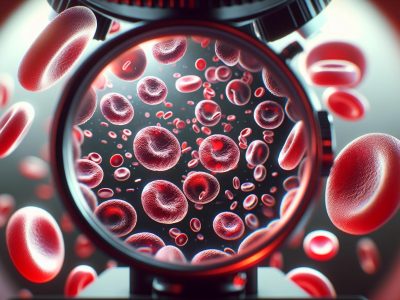Key Difference Between Solute and Solvent Explained with Examples
Understanding Solute And Solvent
A solution forms when a solute dissolves in a solvent. Recognizing their specific roles helps you understand the characteristics of solutions in chemistry and everyday applications.
Definition Of Solute
A solute is the substance that dissolves in a solvent. It’s present in smaller amounts compared to the solvent. For example, in a saltwater solution, the salt acts as the solute. Solutes can be solid, liquid, or gas.
Definition Of Solvent
A solvent is the medium that dissolves the solute to form a solution. It exists in greater quantity than the solute. In saltwater, water is the solvent. Solvents are usually liquids but can also be gases. Water, known as the “universal solvent,” dissolves many substances due to its polarity.
Key Characteristics Of Solute And Solvent
A solute and a solvent have distinct traits that define their roles in a solution. Understanding their physical properties and functions helps you identify them in various contexts.
Physical Properties
- Solute: A solute is usually present in a smaller amount. It’s often solid in physical state, such as sugar or salt, though gases like carbon dioxide in soda and liquids like alcohol in tinctures also act as solutes. Its key feature is its ability to dissolve in the solvent under suitable conditions.
- Solvent: A solvent is generally present in a larger quantity. It’s often liquid, with water being the most common example. Organic solvents like acetone and ethanol or non-aqueous ones like hydrocarbons also serve as solvents in specific solutions. Solvents may exhibit distinct boiling and freezing points influenced by the dissolved solute.
Roles In A Solution
- Solute: A solute contributes to the solution’s concentration and can change the solvent’s physical and chemical properties, such as boiling point elevation or freezing point depression. You can observe this when salt causes ice to melt faster or sugar increases the viscosity of a syrup.
- Solvent: A solvent dissolves the solute, creating a homogeneous mixture. It’s the medium that facilitates molecular interactions. For instance, water enables salt to ionize or sugar molecules to disperse evenly.
The Difference Between Solute And Solvent
Solutes and solvents differ in their roles within a solution. A solute dissolves, while a solvent acts as the medium facilitating the dissolution.
Composition And Quantity
A solute is the component present in smaller quantities. It can be a solid, liquid, or gas, as seen in salt dissolved in water or oxygen mixed in nitrogen gas. A solvent is found in larger quantities and is often a liquid, such as water, the most common solvent used in daily life and chemistry.
Function In Solutions
Solutes affect the solution’s properties by contributing to concentration and altering physical characteristics such as boiling and freezing points. Solvents dissolve solutes, enabling chemical interactions and forming a homogeneous mixture. For example, water can ionize salt or evenly disperse sugar, ensuring uniformity.
Examples In Everyday Life
In saltwater, salt is the solute, and water is the solvent. When sugar dissolves in tea, sugar is the solute, and tea acts as the solvent. In carbonated beverages, carbon dioxide is the solute, and water or soda serves as the solvent. These combinations demonstrate the solute-solvent relationship in daily scenarios.
Importance Of Solute And Solvent In Chemistry
Solutes and solvents play critical roles in creating solutions, which are essential in chemical reactions and practical applications. Their interactions significantly impact scientific research and industrial processes.
Applications In Scientific Research
Solutes and solvents enable the preparation of solutions for experimental analysis. In analytical chemistry, you use dissolvable solutes like salts and acids in water to make standard solutions for titration. Solvents help isolate, measure, or manipulate compounds, such as using ethanol for organic synthesis.
Biological studies use solvents like buffer solutions to maintain pH for enzyme activity experiments. Solutes, like glucose in cell culture media, simulate physiological conditions for studying cellular processes. Without these components, consistent and replicable experiments would be challenging.
Role In Industrial Processes
Solutes and solvents help production processes in various industries. In pharmaceuticals, solvents like ethanol or acetone dissolve active ingredients into solutions, while solutes like active compounds deliver therapeutic effects. Paint production involves solutes like pigments dissolved in solvents like turpentine to create uniform mixtures.
Food industries use solvents like water to dissolve flavors, while solutes like sugar or salt enhance taste and preservation. In petrochemicals, solvents separate crude oil components, and solutes form additives that improve fuel performance. Their combination ensures efficient and effective industrial operations.
Conclusion
Understanding the distinction between solutes and solvents is crucial for grasping how solutions form and function. These components play vital roles in both everyday scenarios and complex scientific processes, highlighting their importance across various fields.
By recognizing their unique characteristics and interactions, you can better appreciate the chemistry behind solutions and their applications. From enhancing flavors to driving industrial innovations, the solute-solvent relationship is a cornerstone of countless natural and technological advancements.
- Understanding the Difference Between Oath and Affirmation: Key Facts You Need to Know - October 30, 2025
- Understanding the Difference Between Annulled and Divorced: Key Legal and Emotional Insights - October 30, 2025
- Ibuprofen vs. Aspirin: A Comprehensive Comparison - October 30, 2025







